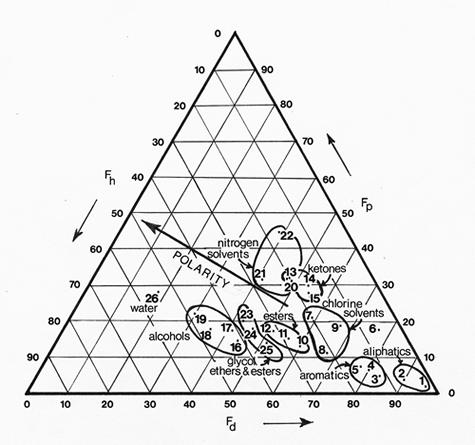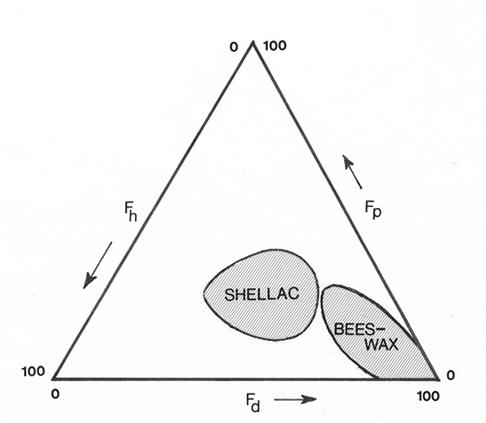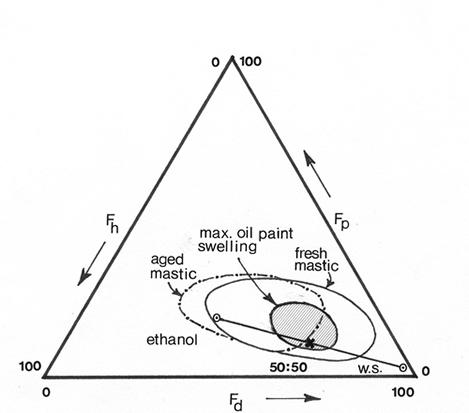
Teas fractional solubility diagram showing solubility parameters of common solvents and families of solvents with similar properties
1 hexane
2 white spirits
3 xylene (dimethylbenzene)
4 toluene (methylbenzene)
5 benzene
6 spirits of turpentine
7 dichloromethane (methylene chloride)
8 trichloethane (chloroform)
9 1,2, dichloroethane
10 n- butyl acetate
11 propyl acetate
12 ethyl acetate
13 acetone (propanone)
14 butanone (methane ethyl ketone)
15 cyclohexanone
16 butan- 1 -ol (n-butanol)
17 propan-2-ol (iso-propyl alcohol)
18 ethanol (ethyl alcohol)
19 mathanol (methyl alcohol)
20 N-Methylpyrrolidone
21 Dimethylformamide
22 acetonitrile
23 2-ethoxyethynol (cellosolve)
24 2-butoxyethanol (butyl collosolve)
25 collosolve acetate
26 water

Figure
2
Teas fractional solubility diagram showing general solubility regions
of shellac and beeswax

Figure
3
Teas fractional solubility diagram showing change in solubility region
of mastic due to ageing, the area of maximal swelling of young oil paint
and the solubility parameter position of a 50:50 mixture of ethanol and
white spirits